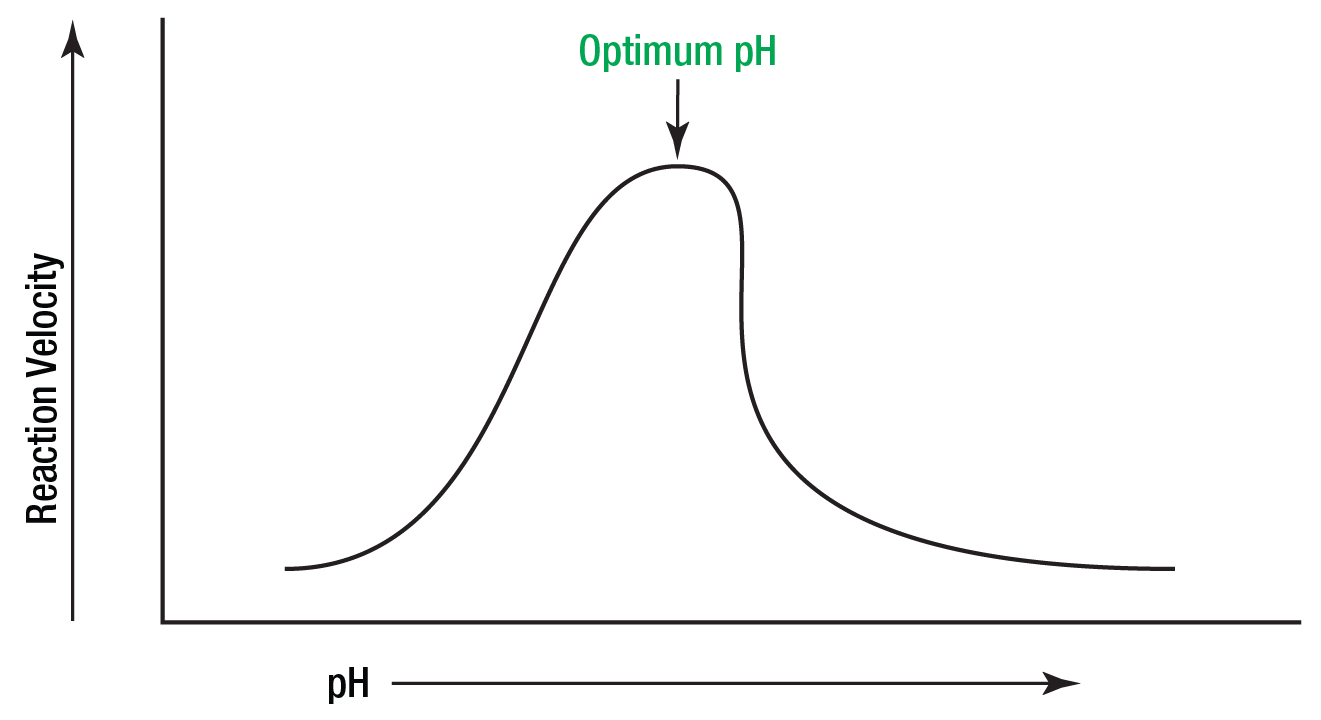For our international customers, please be advised that orders cannot be placed through our website by customers in countries with International Distributor representation.
Introduction to Enzymes
Effects of pH
Enzymes are affected by changes in pH. The most favorable pH value - the point where the enzyme is most active - is known as the optimum pH. This is graphically illustrated in Figure 14.

Figure 14: The effect of pH on the reaction rate.
Extremely high or low pH values generally result in complete loss of activity for most enzymes. pH is also a factor in the stability of enzymes. As with activity, for each enzyme there is also a region of pH optimal stability.
The optimum pH value will vary greatly from one enzyme to another, as Table II shows:
| Enzyme | pH Optimum |
|---|---|
| Lipase (pancreas) | 8.0 |
| Lipase (stomach) | 4.0 - 5.0 |
| Lipase (castor oil) | 4.7 |
| Pepsin | 1.5 - 1.6 |
| Trypsin | 7.8 - 8.7 |
| Urease | 7.0 |
| Invertase | 4.5 |
| Maltase | 6.1 - 6.8 |
| Amylase (pancreas) | 6.7 - 7.0 |
| Amylase (malt) | 4.6 - 5.2 |
| Catalase | 7.0 |
In addition to temperature and pH there are other factors, such as ionic strength, which can affect the enzymatic reaction. Each of these physical and chemical parameters must be considered and optimized in order for an enzymatic reaction to be accurate and reproducible.